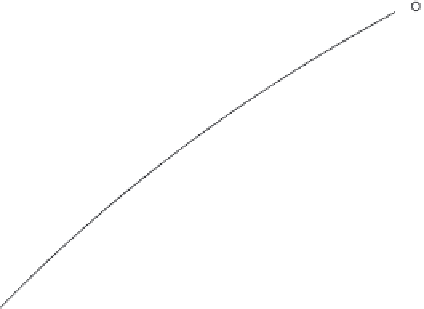Biomedical Engineering Reference
In-Depth Information
homogeneous bone structure gradually becomes inhomoge-
neous. The change in the volume fraction of bone matrix material
on its inner surface is less than that on its outer surface. This
means that the bone tissue near the outer surface is less porous
and thus denser than that near the inner surface, which means
that it is stronger. This can be illustrated by the theory of adap-
tive elasticity. After the transverse electric field is loaded, an
inhomogeneous stress field is generated. Then the stress of the
inner surface is smaller than that of the outer one. As the bone
remodeling process is ongoing, the strain field becomes more
homogeneous. To achieve this, the bone tissue must change to a
state with more porous endosteum and less porous periosteum,
which results in an inhomogeneous bone structure. Although
the value of
e
is very small, transverse electric loads can indeed
change the bone structure. If real remodeling rate coefficients are
obtained by way of experiment, then we can evaluate the effect
of electric field on the bone structure. It is also found that as
time approaches infinity, the value of
e
gradually decreases. This
indicates that the bone structure stabilizes itself at a relatively
steady state, which can be accepted as the end of the remodeling
process.
• Case 2:
p
(
t
) = 0,
P
= 1500 N,
T
0
(
t
) = 0°C, φ
b
− φ
a
= 0, ψ
b
− ψ
a
= 1A.
• Figure 3.10 shows the corresponding variation of
e
with time
t
along the radii of bone for the magnetic loading case. It can be
0
1 day
2 days
5 days
10 days
20 days
30 days
50 days
75 days
100 days
0.0004
0.0003
e
0.0002
0.0001
0.0000
0.026
0.028
0.030
0.032
0.034
0.036
r
(
m
)
FIGURE 3.10
Variation of
e
with time
t
along the radii for magnetic load.












































































































































































































